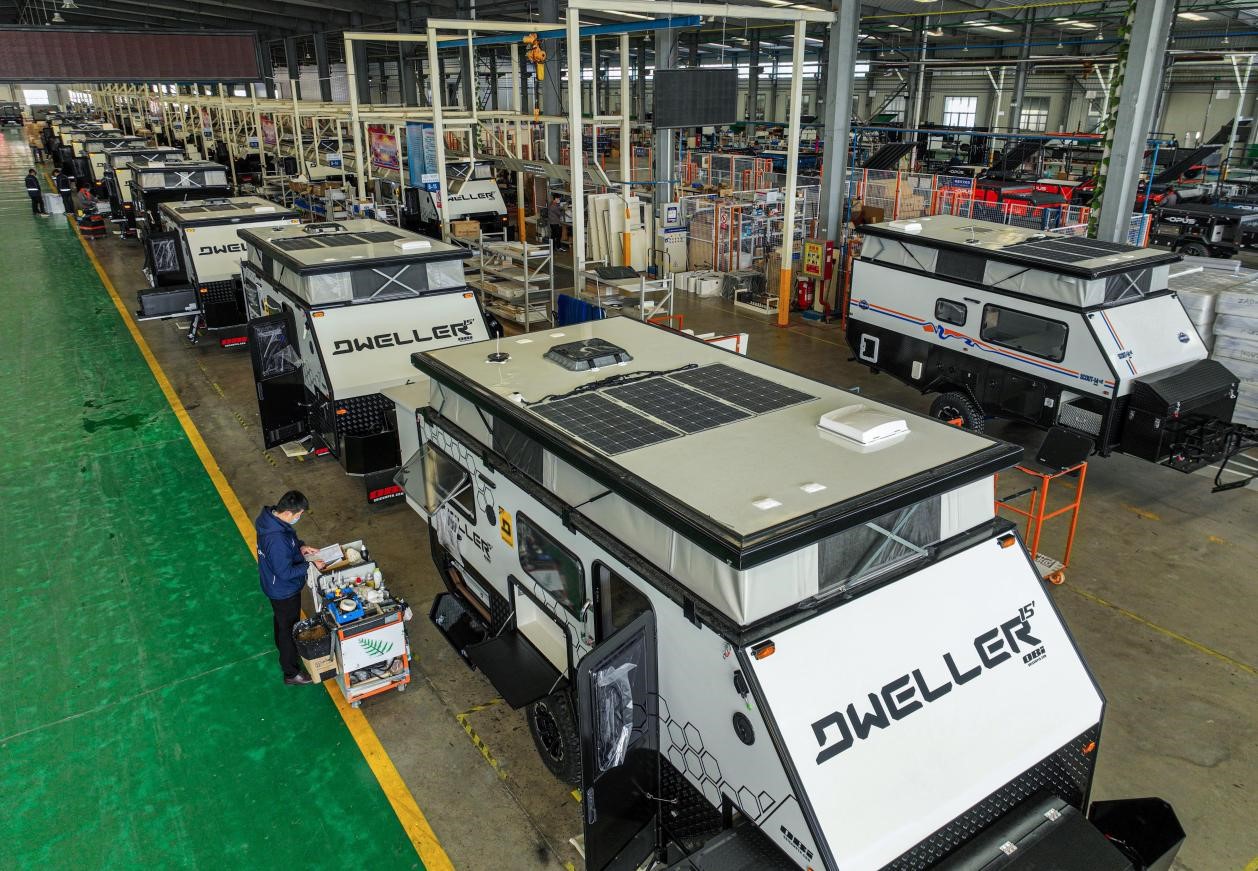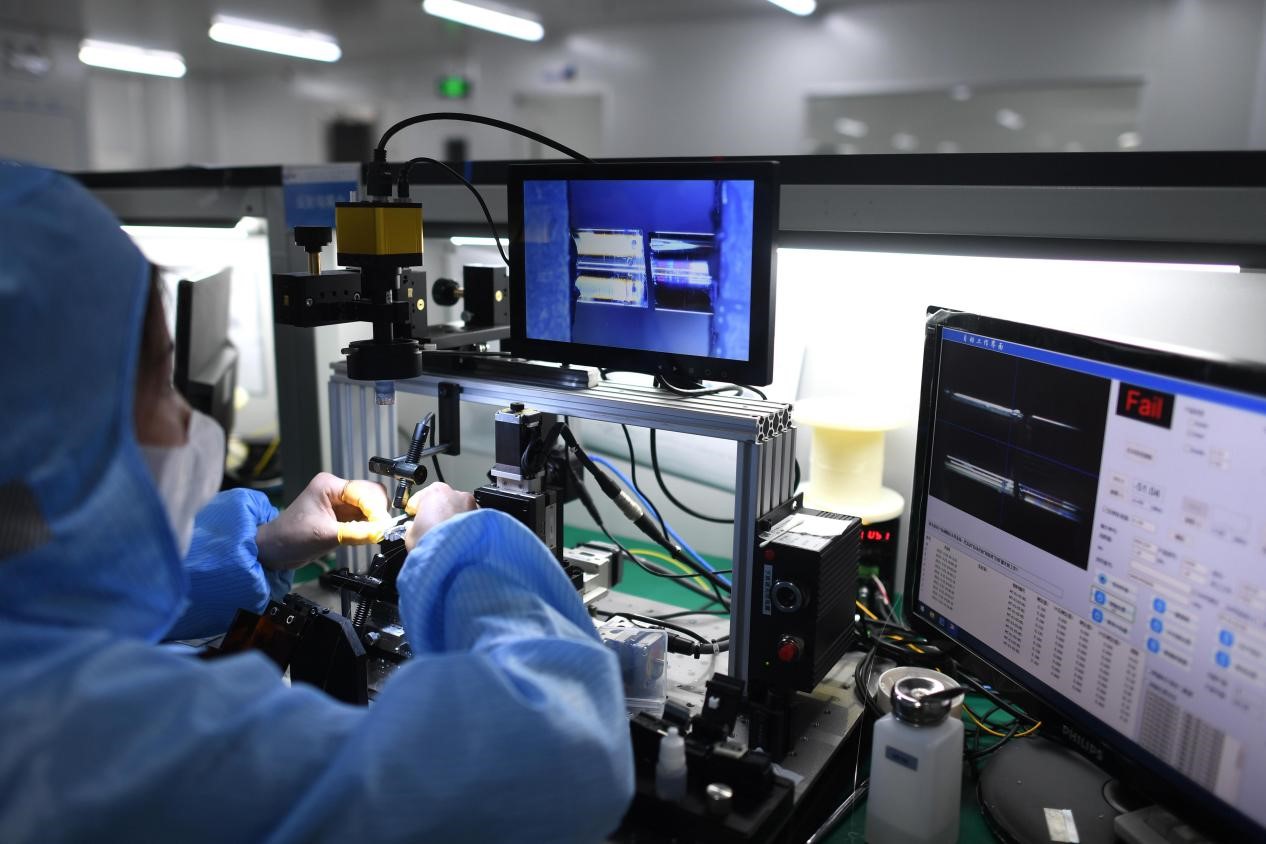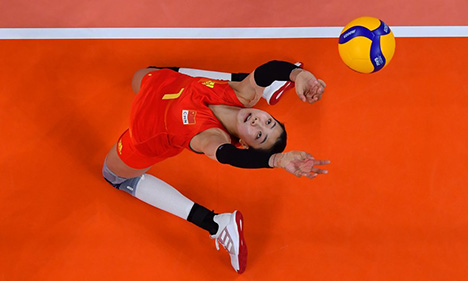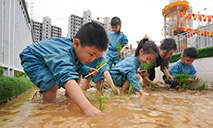China’s economy gets off to a steady start in Q1
China's GDP hit 27.02 trillion yuan in the first three months this year, up 4.8 percent from a year ago and 1.3 percent from the last quarter of 2021, according to a press conference held by the State Council Information Office on April 18.

Recreational vehicles are being manufactured at a plant in Rongcheng, east China's Shandong province, March 22, 2022. (People's Daily Online/Li Xinjun)
The value-added output of the primary industry grew 6 percent year on year to nearly 1.1 trillion yuan, while those of the secondary and tertiary industries were respectively 10.62 trillion yuan and 15.3 trillion yuan, up 5.8 percent and 4 percent from a year ago.
In general, China's economy maintained the momentum of recovery and moved within a reasonable range in the first quarter, said Fu Linghui, spokesperson of the National Bureau of Statistics (NBS) and director general of the NBS Department of Comprehensive Statistic.
Major macro indexes such as employment, commodity prices and balance of payments were maintained within a reasonable range.
The surveyed urban unemployment rate stood at 5.5 percent in the first quarter, which was basically equal to that in the same period of 2021. Consumer price index grew 1.1 percent year on year. Trade in goods saw expanding surplus and trade in services experienced narrowing deficit. Foreign exchange reserves stood at around $3.2 trillion and the balance of payments was stable.

An employee of Etern Optoelectronics, a company in East Lake High-tech Development Zone of Wuhan, central China's Hubei province, works on a production line of optical communication devices, March 25, 2022. (People's Daily Online/Zhou Chao)
The trend of innovative development went on. Emerging industries kept growing and made further steps toward the middle and high ends. In the first three months this year, the value-added output of the high-tech manufacturing sector increased 14.2 percent from a year ago, and that in the equipment manufacturing sector 8.1 percent. The two figures were 7.7 percentages and 1.6 percentages higher than the output growth of industries above designated size, or those with annual revenue of 20 million yuan or more from their main business operations.
New businesses kept expanding. In the first quarter, the online retail sales of physical goods nationwide saw an uplift of 8.8 percent from a year ago, accounting for 23.2 percent of the total retail sales of social consumer goods. The production of new energy vehicles and solar panels went up 140.8 percent and 24.3 percent year on year. The rapid development of 5G, information and artificial intelligence technologies also fostered new areas of growth.
Economic structure was optimized, with the manufacturing sector continuing expanding its share. In the January-March period, the value-added output of the manufacturing sector increased 6.1 percent from a year ago, accounting for 28.9 percent of the GDP.
Consumption played a major role. In the first quarter, final consumption contributed 69.4 percent to the country's economic growth, 18.7 percentage points higher than that in the same period last year.
Livelihood continued improving and residents' income kept growing. The per capita disposable income of Chinese residents expanded 5.1 percent year on year in the first quarter. In particular, that of rural residents increased 6.3 percent and that of urban residents 4.2 percent. The income growth of rural residents continued outrunning that of urban residents.
Industrial production largely remained stable. Fu attributed the rapid growth of industrial production to the domestic and global recovery, the industrial innovation and upgrading, as well as the enhanced market supply and the progress made in relevant sectors. Besides, the country's policies to help enterprises relieve their burdens also played a constructive role in stabilizing industrial production, he added.

Tomato seedlings are transplanted in a greenhouse in Longsheng village, Fuxi neighborhood, Deqing county, Huzhou, east China's Zhejiang province, March 28, 2022. (People's Daily Online/Xie Shangguo)
Fu said the country will work to implement policies that promote industrial and economic development, provide aid to manufacturing and small- and medium-sized enterprises, enhance its assistance for enterprises severely impacted by COVID-19, and stabilize price and supply of new energy and raw materials, so as to maintain the stability of the industrial and supply chains and promote stable and healthy development of industries.
Since this year, China has been seeing increasing external instability and uncertainty, as well as expanding downward pressure at home. The country's economic operation was maintained within a reasonable range despite all these negative factors, and the Chinese economy still sees potential of growth.
Though there's short-term pressure, consumption and investment are likely to grow, and the dividends of opening up and benefits of macro policies will be released. China still enjoys advantages in maintaining stable economic growth.
In general, with a complete industrial system, huge market, abundant dividends of reform and opening up and strong capability of economic governance, China is able to cope with risks and challenges, Fu noted, adding that the country is expected to maintain the momentum of recovery this year.
Photos
Related Stories
- Bright spots seen in China’s future economic growth in investment, consumption, new infrastructure
- Analysts stay upbeat on prospects for economy
- China moves to support small firms, while keeping loan rates unchanged
- China to build on good business climate
- Economist: China to become high-income country in couple of years
- China to be 'stabilizer' of global economy in 2022
- Experts laud economic stability among priorities
- China may set GDP growth target above 5% for 2022 as NPC session kicks off: economists
- Economic fundamentals stay strong
- Experts: Tensions won't rattle macroeconomic scene
Copyright © 2022 People's Daily Online. All Rights Reserved.










